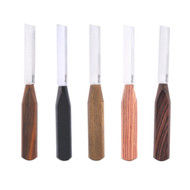Best Reed Knives For Beginners
Posted by Tim Hodge, edited by Clair Cangialosi, DMA on Jul 9th 2025
Oboe and Bassoon Reed Knives:
What First-Time Buyers Need To Know
Buying your first reed knife is an exciting milestone in every bassoon or oboe player’s journey. However, the numerous options on the market today can be overwhelming. At Hodge Products alone, we have nearly 60 different knives! A recommendation from a teacher is usually a great place to start.
Still wondering what reed knife to buy? This post will walk you through everything you should consider before purchasing your first reed knife, including:
- Student vs Professional grade knives
- Types of reed knives and their uses
- Recommended Reed Knives for Beginners
- Right vs left-handed setup
- Works Cited
Read on for a full breakdown, or skip to the chart at the bottom of this post for a comparison of all of the knives we carry.
Student vs Professional Reed Knives - What’s The Difference?
Although the exact specifications vary from brand to brand, there are two main characteristics that we look for when recommending reed knives to new reed makers. First, is the ease of use. Student grade reed knives are made to be easy to sharpen and easy to use with minimal setup. Second, is the price point. All of the knives recommended in this post are under $65.
Professional reed knives are typically made of higher quality steel that can hold a sharper edge for longer, contributing to the higher price point. See our Guide to Choosing a Reed Knife (coming soon) for a more in-depth comparison.
What Are The Types of Reed Knives?
Reed knives come in two general styles: Double Hollow Ground and Beveled. This refers to the thickness and shape of the knife blade. Double Hollow Ground knives also come in an “extreme” style, which has an especially thin edge. Figure 1 shows these three styles.
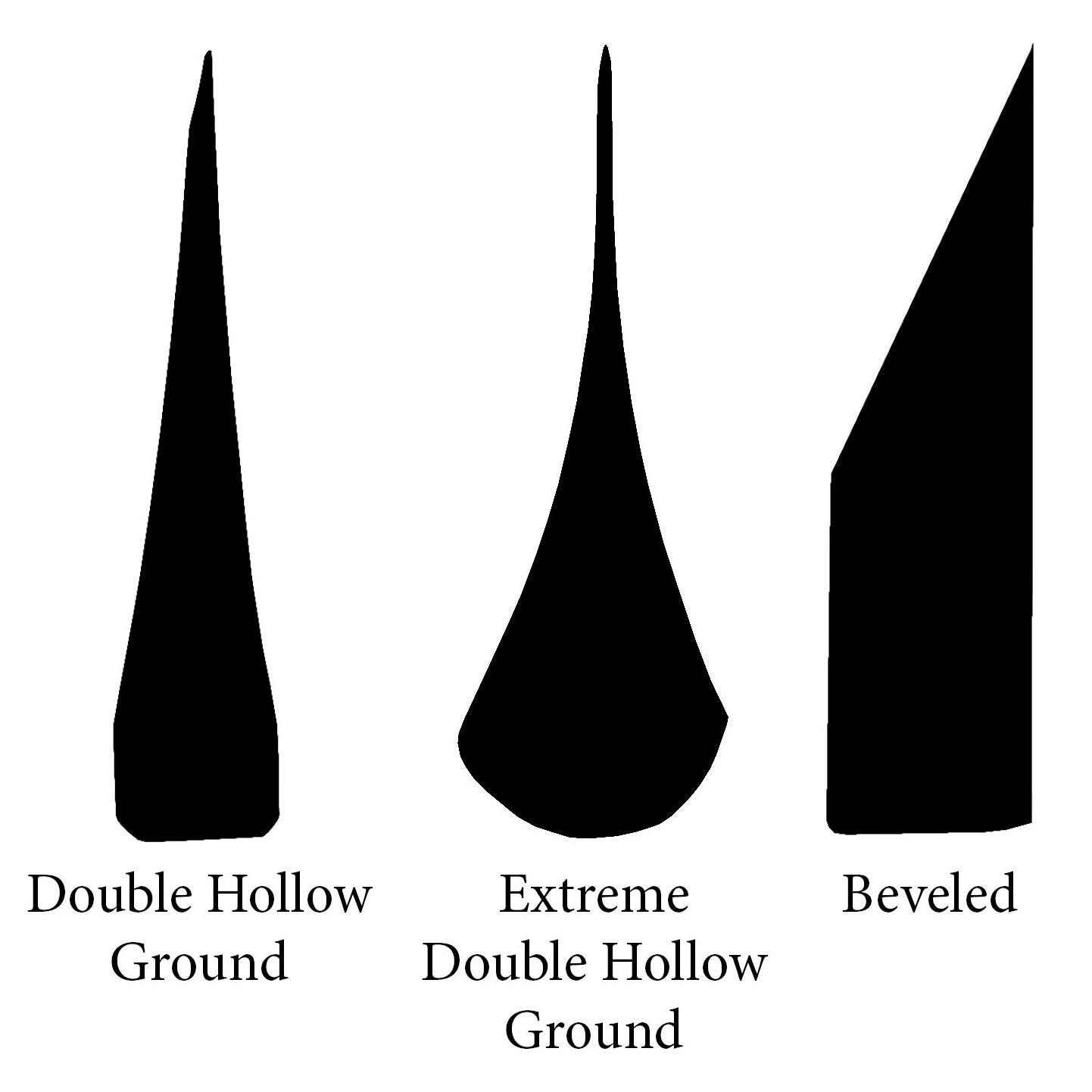
Double Hollow Ground Knives
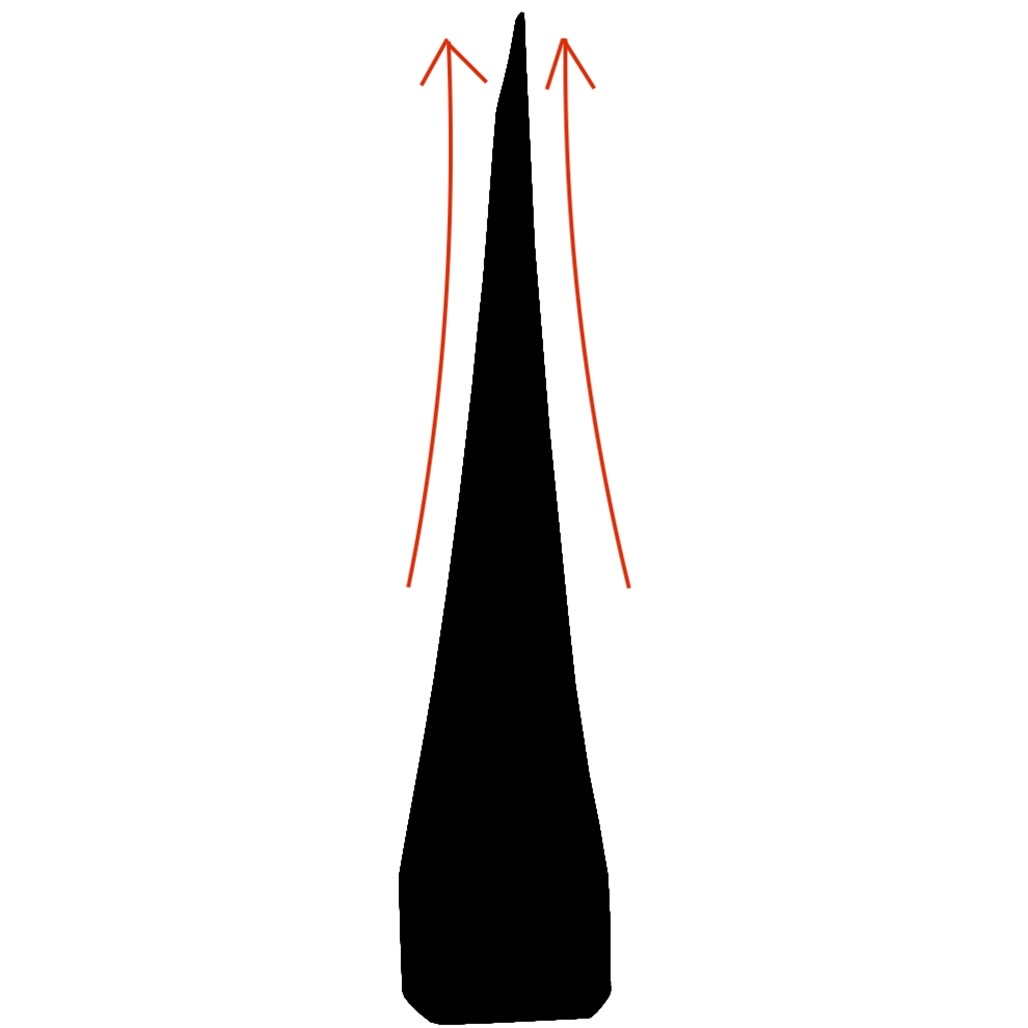
Double hollow ground refers to the concave shape of the knife blade on both faces. The blade tapers to a very fine edge, which makes these knives ideal for precise, controlled scraping. The edge of a double hollow ground knife is microscopically bent to a consistent angle along the blade known as the burr, which helps to “grab” the cane with each scrape. Double hollow ground knives give the most flexibility in the scrape and can be used for all steps in the reed making process. However, some oboists and bassoonists opt to use a double hollow ground knife only for fine detail work. Figure 2 on the left shows a double hollow ground knife.
Although it is a defining feature of double hollow ground knives, the burr is more easily felt on the edge of the knife than seen. As demonstrated on scienceofsharp.com, on a sharp knife the burr is only tens of microns long and several microns thick, but can be viewed using electron microscopy. Figure 3 shows an enlarged cross section of a knife blade, with the burr circled in red.
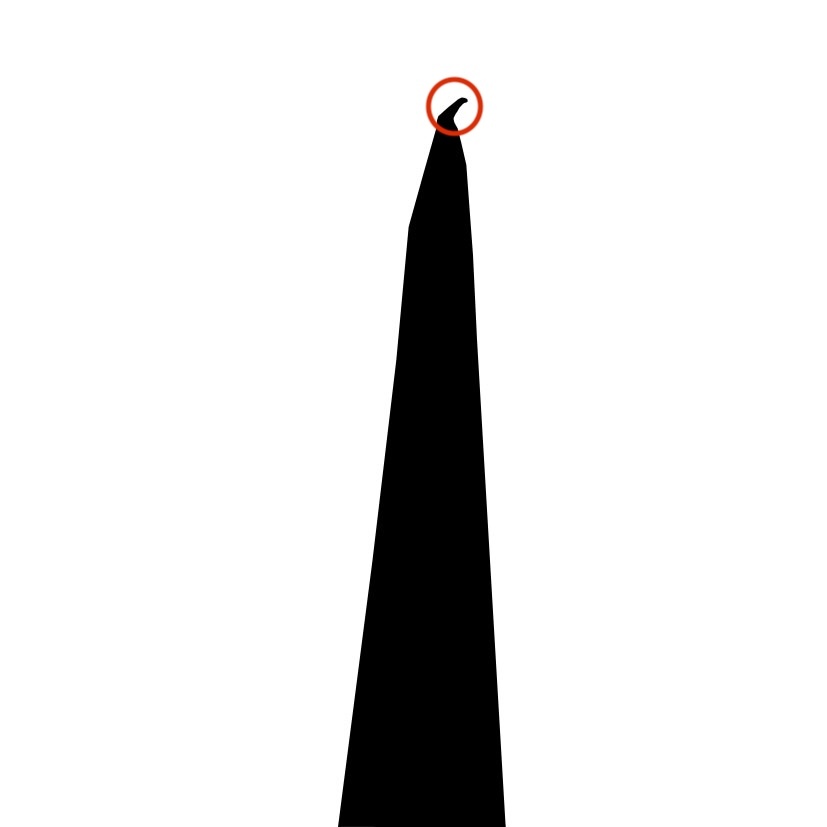
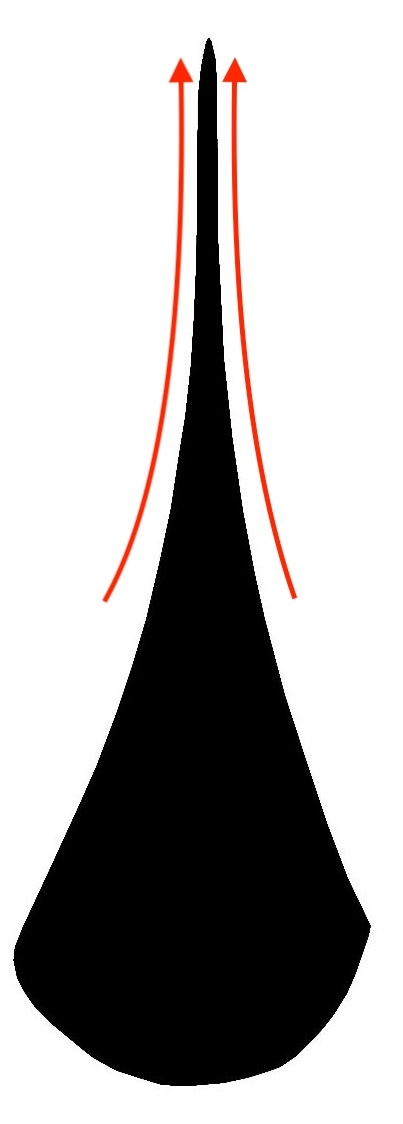
Extreme Double Hollow Ground knives have a similar shape to their non-extreme cousins, but the concaveness of the faces is much more pronounced, making the edge of the blade noticeably thinner. These knives are best used for fine detail scraping, and are typically not recommended until the user has gained some basic scraping technique. Figure 4 shows an extreme double hollow ground knife blade.
Our Recommendations: Best Double Hollow Ground Knives For Beginners
We carry three double hollow ground knives that are great for beginners. The Chiarugi and Rigotti knives are similar and you should choose based on price or brand loyalty. The Jende is made with a significantly higher quality steel, and is already set for right-handed use.
- Tempered and grounded steel blade
- Pearwood handle
- knife sheath included
- Tempered and grounded steel blade
- Five handle options, including ebony, olive, pearwood, rosewood, and walnut
- Knife sheath included
- Higher quality steel blade
- Maple wood handle
- Knife sheath included, additional sheaths available
Beveled Knives
Beveled knives have one flat face and one face that is angled. Rather than using a burr, beveled knives have a wider taper towards the edge of the blade. The blade is also thicker and heavier than the double hollow ground knife. Figure 5 shows a beveled blade.

figure 5.
While beveled knives can be used for finishing a reed, many oboists and bassoonists prefer the heft and stability of the beveled knife for the rougher work of the earlier stages of scraping.
Our Recommendations: Best Beveled Knives For Beginners
We carry two beveled knives that work well for beginners.
- High quality steel blade
- Ebony or pearwood handle
- Knife sheath included
- High quality steel blade
- Pearwood handle
- Knife Sheath included
Right vs Left-Handed Setup
Before purchasing a reed knife, it is crucial to be sure to select the correct right or left-handed option. Although student reed knives come extremely sharp, the blade needs to be correctly set up (handed) before the knife can be used.
Most people find it easiest to scrape reeds using their dominant hand, so the direction of the burr will be different depending on whether you are right or left-handed. It is important to position the angle of the burr towards your scrape (away from your body) so that the knife will remove cane with minimal pressure being applied to the reed.
Most of the knives in this post will need to be handed (set up) before use. Exceptions to this are:
- Chiarugi beveled knife- choose right or left-handed at checkout
- Jende Student Knife- pre-sharpened for right-handed reed makers (if you are left-handed, you will need to resharpen to put the burr in the correct direction
For more information about setting up your reed knife before use, please see our Guide To Handing A Reed Knife (coming soon).
It will also be necessary to purchase a sharpening stone or sharpening rod- but that’s another post for another day. You can find a list of sharpening tools that we carry on our website.
Comparison
The chart below compares the five reed knives discussed above.
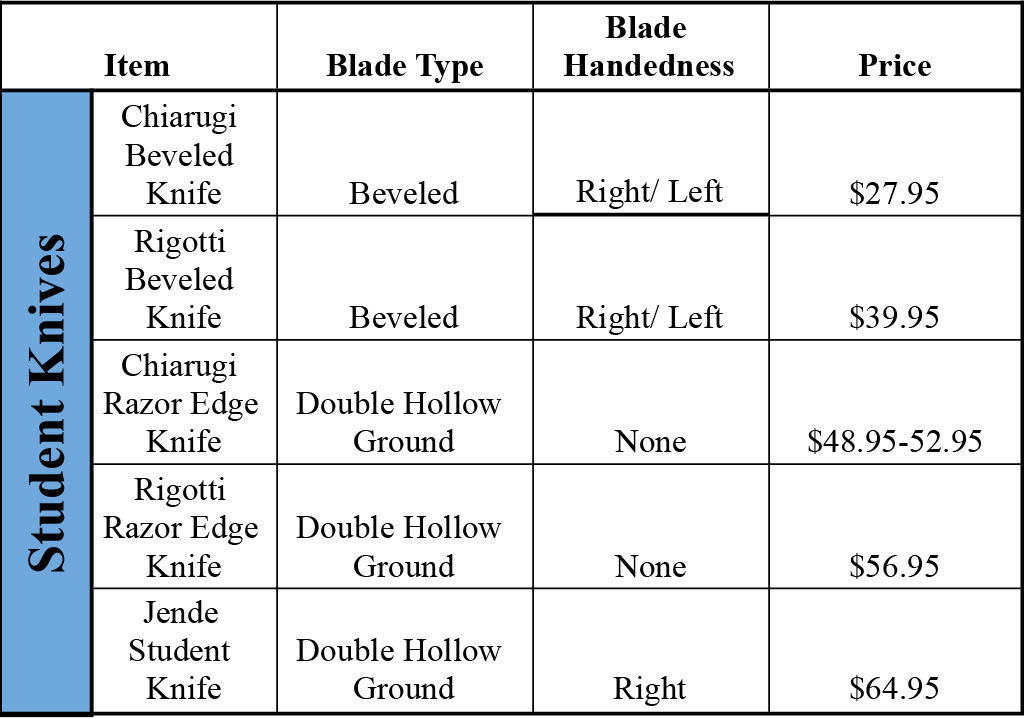
Conclusion
Like many things in the life of a bassoonist or oboist, which reed knife to buy is largely dependent on personal preference. What works for one person may or may not work for someone else. For first time knife-buyers, it may be helpful to try your teacher or friend’s knives to see what you like before purchasing. If you want to learn more about professional reed knives, please see our Guide to Choosing A Reed Knife.
Still have questions? Contact us- we’ll be happy to help you!
Works Cited
“What is a burr?” scienceofsharp.com, January 11th 2025. https://scienceofsharp.com/2015/01/11/what-is-a-burr/

